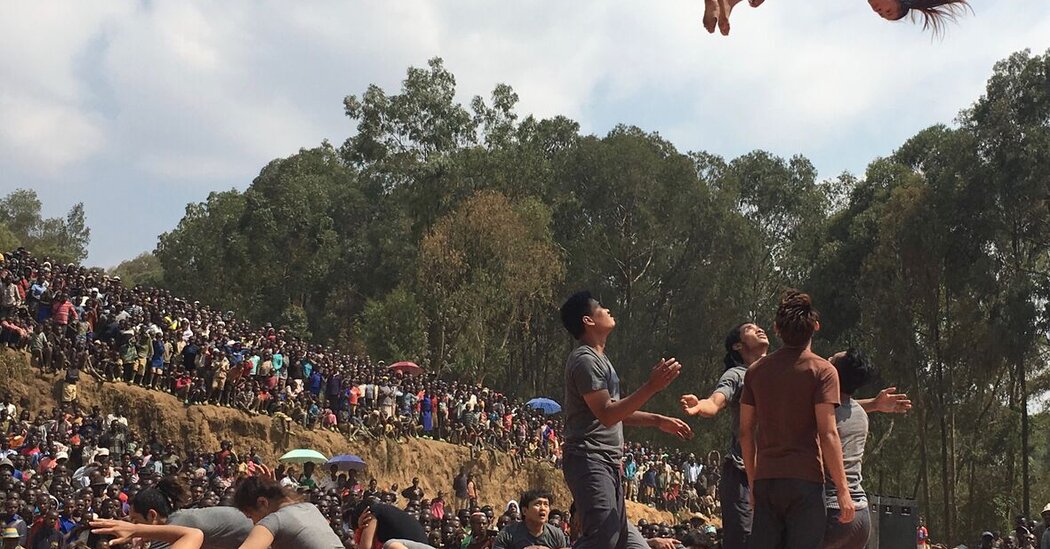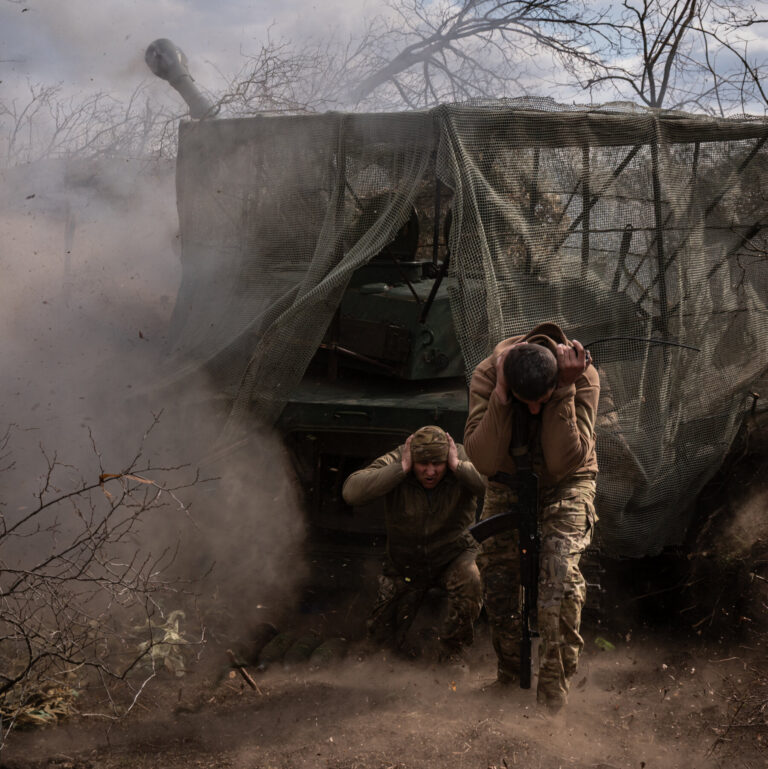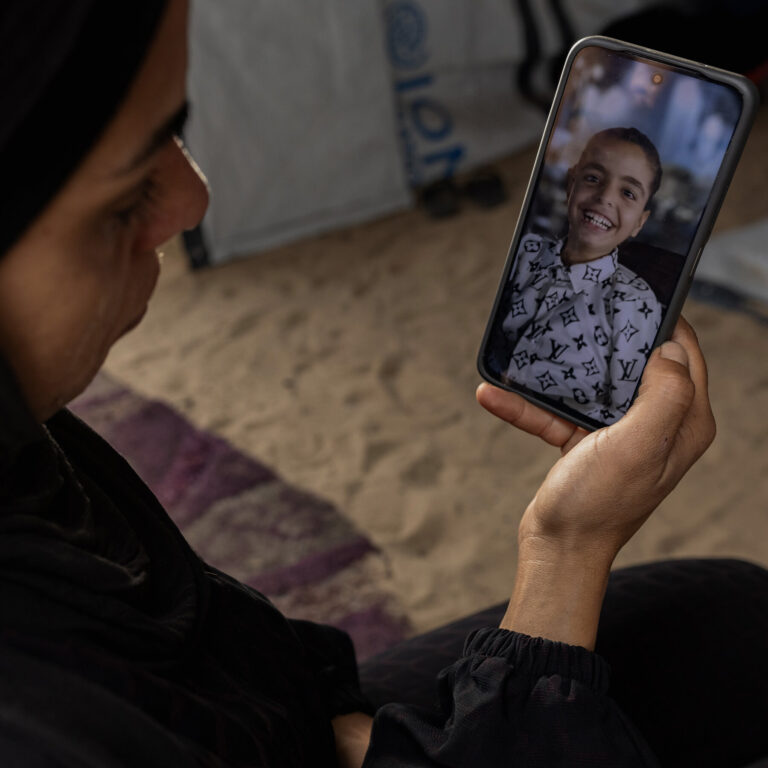Using her arms as a makeshift slat, a Sudanese woman in a black hijab and black-and-white kaftan clapped her hands, signaling the start of rehearsals. The other amateur actors, wearing comical stick-on mustaches, moved toward their goals, improvising a scene in a women's beauty salon where a customer's hair is accidentally dyed blue.
By the time the scene was over, all the women were hysterical and teasing each other about how they could play their parts better next time. Scenes like this are common at the Kuluhenna Creative Workshop, held in a clubhouse on the outskirts of this Yorkshire town. The workshop is open to all local women, but with a focus on immigrant communities, including refugees and asylum seekers.
The 90-minute class, which the Mafwa Theater has been holding since 2019, is a happy space. Every week, around 15 women gather to tell stories, dance, act and gossip. Bus passes are provided, a play area for young children and a health worker on site in case any of the women want to talk.
Eman Elsayed, a mother of three originally from Egypt, said that before joining the workshop in 2020, she was “depressed, isolated and fed up” with her life in Leeds. But ultimately, especially after joining Mafwa Theatre's Associate Artists Program in 2021, she felt her life changing.
“Art is a magic bullet,” said Elsayed, who now has a paid job doing community outreach for the program. “But you have to believe it and you have to take the time to see what it will do.”
Mafwa's project is just one example of a larger trend: More and more groups and individuals around the world are using the arts to empower, unite and even help heal people who have experienced trauma, war and natural disasters, or discrimination, poverty and displacement.
The idea of healing through the arts is an overarching theme of this year's Art for Tomorrow conference, an annual event convened by the Democracy & Culture Foundation with panels moderated by New York Times journalists.
At this year's event this week in Venice, the “Art as Supreme Mediator” panel will examine how people and groups use the arts in community and international development and peacebuilding programs.
“What I observed is that the arts allow you to create a space of truth,” said Adama Sanneh, conference speaker and co-founder and CEO of the Moleskine Foundation. Through its Creativity Pioneers Fund, the foundation makes grants to small community programs that use the arts to inspire social change, including Mafwa, which received one last year.
“It's neutralizing, and in front of the public, the political, there is that space that goes directly to the personal,” Sanneh said. “When you can create that kind of environment, even for a second, then things can really happen.”
Creative people have long understood the power of the arts to teach critical thinking and give people a sense of autonomy. Toni Shapiro-Phim, director of Brandeis University's Peacebuilding and the Arts program, noted that “communities around the world have long recognized the power of the arts” to create constructive social change.
For example, he said, more than a century ago in what is now Myanmar, stories told through traditional puppets were “sometimes the only stories that poked fun at authorities or offered alternative ways to imagine what is possible, how to be a good person in the world.” Around the same time, in Russia, artists like Marc Chagall were teaching art to Jewish orphans as a way to help them overcome their trauma.
“In a creative environment there is an encounter of the self, an awakening to one's unconscious, to one's experiences,” said Tammy Federman, a filmmaker whose new documentary “Memory Game” centers on a theater troupe of survivors of Holocaust in Israel managed by AMCHA, an Israeli social support services organization. “But there is also a group meeting because one person talks about this very traumatic experience and another person can identify with it. It gives you the courage to open up, to share your experience, and there is also joy, there is humour, there is movement and creativity.”
And while research from Brandeis University and IMPACT, a non-profit organization born out of a Brandeis initiative, found that creative sector efforts tackling tough challenges “are not adequately understood, under-resourced and/or under-funded ”, there is a growing awareness that through art, individuals and communities – including those who “have been suppressed or repressed” – can make themselves heard.
Recognizing this, mainstream institutions and donors, according to Tiffany Fairey, a visual sociologist in the Department of War Studies at King's College London, have begun to take the arts seriously as a “vital type of soft power” peacebuilding tool. “The main criticism of liberal peace is that it neglects the people who are directly affected by conflict, that communities themselves have no say in peacebuilding policy and planning,” she said. Now, she said, “people rely on the arts for their ability to engage communities.”
Ronen Berger, an Israeli playwright who will also be a speaker in Venice, said one reason the arts could be so successful in helping people deal with collective trauma is that creative practices like dance, storytelling and singing dates back to childhood.
“As children, when we begin our communication with the world it is through play, through voices, through songs, through swinging, which is dancing,” he said. “So this way of working is very primal and very universal.”
Berger said that when he worked in large groups, the easiest way to connect was through rhythms like hand clapping. “This overcomes language, cultural and age barriers,” she said, adding that the performance is important because it can not only raise awareness of an issue, but also allows participants to feel seen and part of a larger community. wide. “We can get to know each other and feel like we're doing something together.”
That idea, of connecting something simple, led Michael Lessac to found Global Arts Corps, which has produced plays in post-conflict areas including Northern Ireland, the Balkans and Cambodia. It all started with “Truth in Translation,” a play that debuted in Kigali, Rwanda, in 2006 and told the story of South Africa's Truth and Reconciliation Commission through the eyes of translators.
The show traveled to a number of post-conflict areas, creating wider dialogue and debate. “I had people come up to me in rehearsals and say, 'Well, I don't think I can be on your project because I don't believe in forgiveness,'” said Lessac, whose TV directing credits include “Taxi,” “ Newhart” and “Everybody Loves Raymond.”
«And then there was no talk of forgiveness. I said, 'I'm not asking you to believe it, I'm asking you to try it.'” Lessac said he often asked actors to play the opposite emotion to what they were feeling.
“So if it's hate, you play love, and they pick up a lot of things as a result of jumping to the opposite,” he said. “In that sense, you are going through a process that you could never go through if you have three lawyers and the oppressor standing in your way.”
The arts can also draw attention to some issues. “No Direction Home”, a London-based program offering workshops and concerts to enable people from refugee and migrant backgrounds to perform stand-up comedy, presented shows that entertained thousands of people.
Almir Koldzic, director and co-founder of Counterpoints, which organizes both “No Direction Home” and Refugee Week in Britain, noted that art has “the ability to improve our wellbeing, to help our mental health, to empower people to use creativity to cope with loss.
“On a broader level,” he said, “the arts have enormous potential to open spaces of connection, to invite people to develop empathy.”





